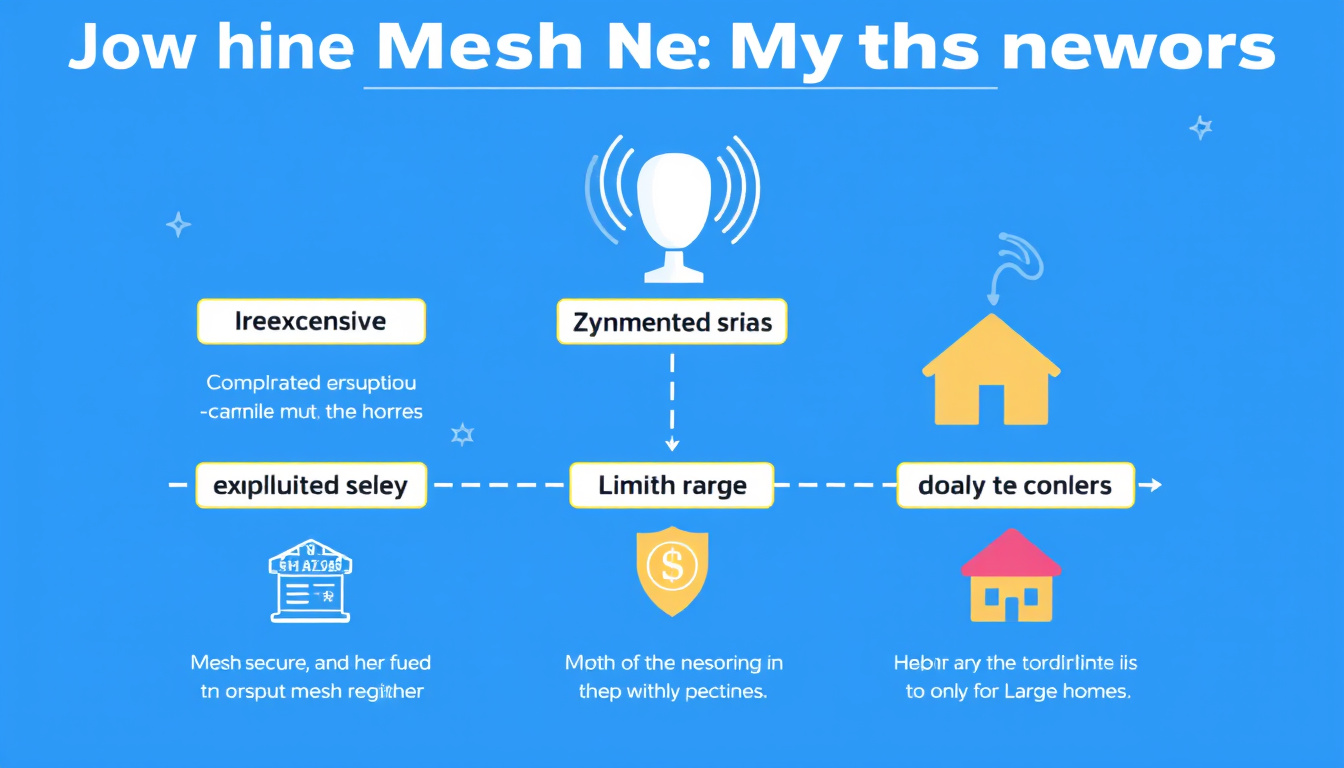Mesh networks have gained popularity for enhancing Wi-Fi coverage in homes and workplaces. However, as with many technologies, misconceptions abound. Here, we debunk some of the most common mesh network myths to help you make more informed decisions.

Myth 1: More Nodes Always Equal Better Performance
A common assumption is that adding more nodes will enhance network performance. In reality, while additional nodes can boost coverage, too many can lead to decreased performance. Increased interference can occur, and devices may unnecessarily switch between nodes, potentially causing latency issues—particularly noticeable during activities like gaming or video conferencing. It’s essential to create a balanced node configuration that optimally covers your space without overcrowding.
Myth 2: Mesh Networks Are Only for Large Homes
Another prevalent myth is that mesh networks are only beneficial in large residences. In truth, even smaller spaces with challenging layouts—like long hallways—can benefit significantly from a mesh setup. The necessity of a mesh system should be based on the strength of your Wi-Fi signal in different areas, rather than the overall size of your home. If certain rooms have weak signals, a mesh network can effectively boost connectivity.
Myth 3: Mesh Networks Are Simply Advanced Range Extenders
While mesh networks do extend Wi-Fi coverage, they function more intelligently than traditional range extenders. Range extenders rebroadcast signals without discerning which node would provide the best connection, often leading to degraded performance. In contrast, mesh networks use dynamic routing to connect devices to the most efficient node, ensuring a more streamlined and effective Internet experience. This makes them superior for maintaining connection quality across your home.
Myth 4: Mesh Networks Always Deliver Greater Speeds Than Traditional Routers
There’s an assumption that mesh networks will inherently provide faster speeds compared to conventional routers. The truth is that speed advantage depends on the technology behind the router or mesh system in use. While a contemporary mesh network may outperform an older router, high-end standalone routers might deliver comparable or even superior speeds. Ultimately, the performance will depend on your network setup, Internet plan, and equipment capabilities.
Myth 5: Setting Up a Mesh Network is Complicated
Many individuals shy away from deploying mesh networks due to the belief that setup is complex. However, modern mesh systems are designed for user-friendliness. Most major brands offer intuitive apps that guide users through the installation process. These applications often minimize the risk of errors, turning a once-daunting task into a simple plug-and-play scenario. Even for those with limited tech experience, setting up a mesh network can be straightforward.
Conclusion
Understanding the truths behind these mesh network myths can greatly influence your networking decisions. Mesh systems can significantly enhance Wi-Fi coverage and performance, but it’s crucial to apply the right principles and knowledge when considering them. With informed choices, you can avoid common pitfalls and optimize your home networking experience. Whether you are in a small apartment or a sprawling home, mesh networks could be the solution to your connectivity challenges—if deployed correctly.



